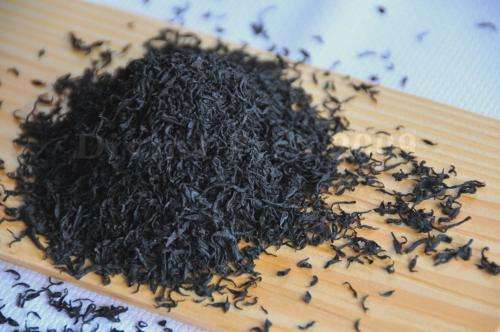How stable are arsenic compounds found in edible algae?

Researchers at UPM have studied the stability of diverse arsenic species found in edible marine algae and have established the best conditions for their storage and preservation.
By developing a specific analytical method, members from the research group of Materials Technology and Environment (TEMATMA) of the School of Civil Engineering of Universidad Politécnica de Madrid (UPM) have studied the stability of diverse chemical species of arsenic found in the edible alga Hijiki (Hizikia fusiformis) both in the dry sample and in its water extracts.
The results show that all arsenic species found in this alga remain stable in its dry sample without any special storage conditions at least for a year, and in the case of the water extracts of the same alga only remain stable under conditions of cooling for a week at the most. This information is essential when it comes to establish the more suitable preservation conditions in order to ensure the accuracy of the chemical analysis.
Over the last years an area of analytical chemistry has been focused on the chemical speciation by developing analysis methods that allow us to distinguish the diverse "species" of an element. This occurs because the chemical, biological and toxicological properties of the elements depend on their chemical shape.
In the specific case of arsenic, researchers have identified more than 50 chemical species so far both in the environment and in the biological systems. Some of these chemical species are highly toxic while others are considered innocuous even at high concentrations.
Studies on stability of chemical species enable us to detect transformation and interconversions among them as well as possible losses during sample storage processes and chemical analysis. Thus, it is possible to establish suitable storage conditions affecting the safety analysis and the accuracy of the obtained results.
The research group TEMATMA of UPM, lead by Professor María Ángeles Quijano, has developed an analytical method based on the coupling of high-performance liquid chromatography with atomic fluorescence spectrometry. This method allowed researchers, after microwave-assisted extraction with deionized water, to identify up to eleven arsenic species in edible algae.
Various studies on stability of arsenic species in the edible alga Hijiki (Hizikia fusiformis) were carried out by using the analysis method mentioned before both in the original dry sample (dehydrated) and in its water extracts. The Hijiki alga was selected because it has up to six different arsenic species, both inorganic (arsenate) and organic (dimethylarsinic acid and four arsenosugars) as well as being one of the most common edible algae in Japan.
The results show that the species found in the algae remain stable in the dry sample and stored in polystyrene containers at 20°C (68°F) at least for a year. Regarding the water extracts of the same algae and in order to avoid its immediate analysis, it is recommended its conservation at 4 oC (39.2 oF) using either polystyrene containers or amber glass for a week at the most. After that time, some of the organic compounds stop remaining stable.
This piece of work, along with other studies developed in the field of arsenic speciation in marine algae and plants are part of the doctoral thesis of Professor Sara García Salgado.
These findings have contributed to increase the information about the stability of arsenic compounds in marine algae and the suitable preservation conditions of dry samples and their extracts. These results are of a great interest in the field of analytical chemistry since it can greatly influence to obtain reliable and accurate results in the studies of arsenic speciation.
More information: S. García-Salgado; M.A. Quijano; M.M. Bonilla."Arsenic speciation in edible alga samples by microwave-assisted extraction and high performance liquid chromatography coupled to atomic fluorescence spectrometry". Analytica Chimica Acta 2012, 714, 38-46 (DOI: 10.1016/j.aca.2011.12.001 ).
S. García-Salgado; M.A. Quijano. "Stability of toxic arsenic species and arsenosugars found in the dry alga Hijiki and its water extracts". Talanta 2014, 128, 83-81 (DOI: 10.1016/j.talanta.2014.04.038 ).
S. García-Salgado; M.A. Quijano. Estudios de especiación de arsénico y acumulación de metales. Editorial Publicia (Alemania), 2013. (ISBN: 978-3-639-55329-1).
Journal information: Analytica Chimica Acta
Provided by Universidad Politécnica de Madrid


















